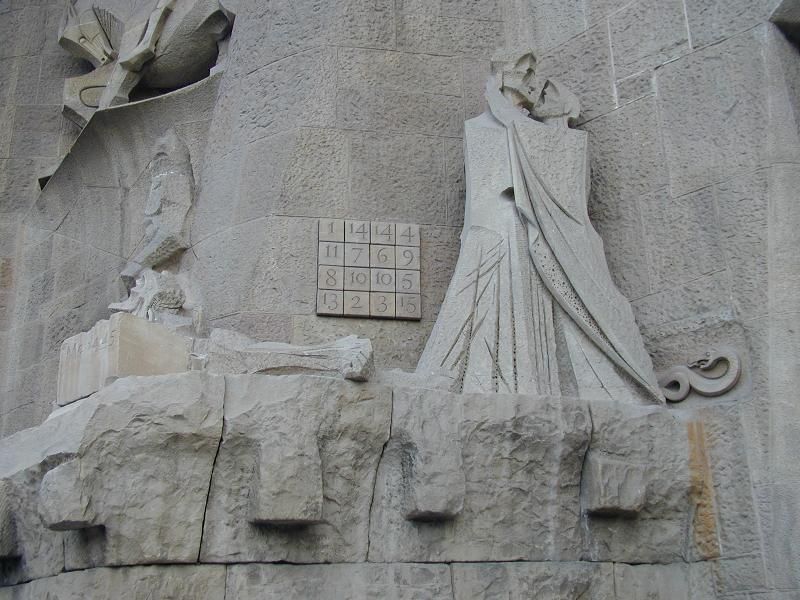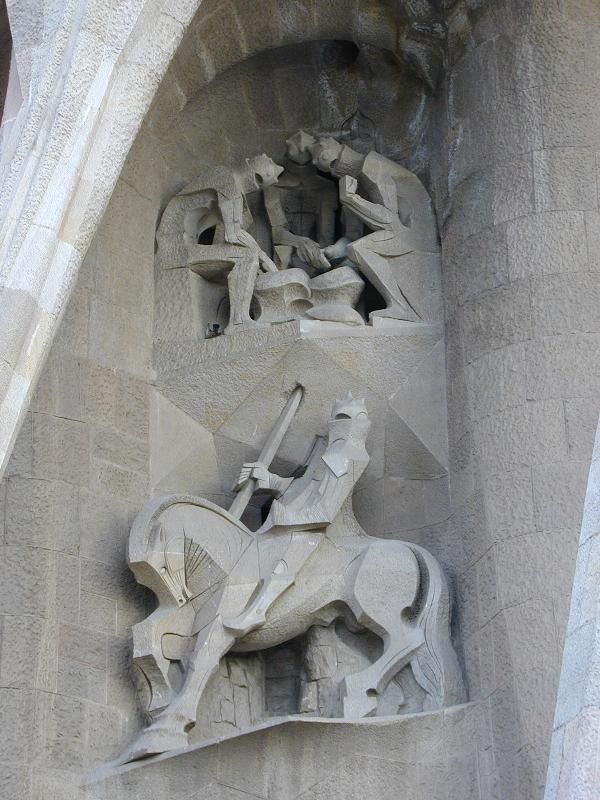Architect and designer, Antoni Gaudi is the most internationally prestigious figure in Spanish architecture. Born in Reus, in Catalonia, he graduated in Barcelona in 1878 and this city became the center of his activities. One important aspect is his capacity as designer.
This led him to create, in close collaboration with some of the very fine artisans of his time, all those elements making up architectural space - wrought iron, furniture, stained glass, sculptural work, mosaics, ceramics and so on - within an organic concept of decoration and with the integration of these elements into the construction process.· The sea landscape was one of his most preferred inspirations.
In his own time, Gaudi was both admired and criticized for the audacity and singularity of his innovative solutions. His fame on a world scale has become an unquestioned fact both in specialized circles and among the general public.
Gaudi's design techniques
In Gaudi's work, it is suitable to appreciate his point of view as painter and sculptor. For him color was light, and whether he was using pure or iridescent shades, gold or silver, aspect and tone were just as important as the quality and durability of the pigment.· All of Gaudi's designs began life as three-dimensional models in clay or plaster that allowed him to play with materials with maximum degree of creative freedom.
It is basically for this reason that his furniture gives the impression that it has been made out of some wholly malleable and soft, absolutely plastic material. The absence of symmetry is a constant characteristic in Gaudi's work. As in nature, nothing in Gaudi's buildings or in his furniture is absolutely identical.
When he came to design a piece of furniture he always thought about the person who was to use it and particularly about his bones, to which the form of the object had to be perfectly adapted. Gaudi designed the first set of furniture in a naturalistic style, under the new influence of Modernism whose resonance can be seen beginning to emerge in its sinuous, plant-like lines, working with forms in which it seems as if the grain of the wood has mastered the cabinetmaker.
Nature itself laid down the law, with growth determining the forms in well-seasoned fine woods with joints and unions calculated to perfection by Gaudi. Throughout his career Gaudi was very concerned with ergonomic design.
His works are many, so I list a few that really attracted me when doing my Gaudi tour and some impressions:
Park Güell - Carrer Olot
Gaudi planned and directed the construction of the park in Barcelona from 1900 to 1914 for Count Eusebio Güell.
This park is a place of great plastic beauty. A grand stairway divided by a mythological dragon or lizard leads to the large hypo style hall.· This is built with 84 inclined columns. These in turn support the great upper plaza, a fine balcony over-looking the city and the sea.
Casa Batllo
Apartment block totally renovated by Gaudi between 1904 and 1906 in Barcelona for the Batllo's family. One of the architect's most complete works, it produces an indefinable sensation of lightness in spite of the profusion of forms and motifs. At the first floor level of the undulating façade is a striking stone structure in the form of loggia supported by columns which frame fine windows decorated with stained glass.
La Sagrada Familia
Monumental church dedicated to the Holy Family, Gaudi's most famous work, the finest example of his visionary genius, the worldwide symbol of Barcelona and the Cathedral of the third Millennium. The expiatory Temple of Sagrada Familia was begun in 1882 by the architect Francesc de Paula del Villar i Lozano, after certain divergences with the promoters and had begun only the crypt, gave up the direction of the work.
In 1883, Gaudi takes the direction of works and he will devote all its life to the realization of this monument left unfinished by his death in 1926. The Cathedral is a synthesis of his architectural knowledge with the complex system of symbolism and a visual explication of the mysteries of faith. There would be extraordinary façades representing the birth, death and resurrection of Christ with eighteen towers symbolizing the twelve Apostles, the four Evangelists, the Virgin Mary and the Christ.
The work was interrupted in 1936 when the crypt and Gaudi's studio were burnt. The project was resumed in 1952 using existing drawings and models.
The Sagrada has should be able to accommodate more than 13,000 people, and the platforms, on the sides, a chorus of 1,500 people.
The whole of the building is an allegory of the Christian religion. The 170 height meters arrow will incarnate Christ. The uniqueness and complexity of the project, make practically impossible to give a precise date of time necessary to build the remaining ten domes.
The most important factor is the firm will of a great number of people who wish to contribute to the completion of the temple. And carry out the wishes of Gaudi, "a Cathedral open for every buddy, a place of spirituality with the Christian message, a place of fraternity for all.




















